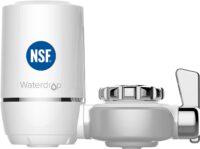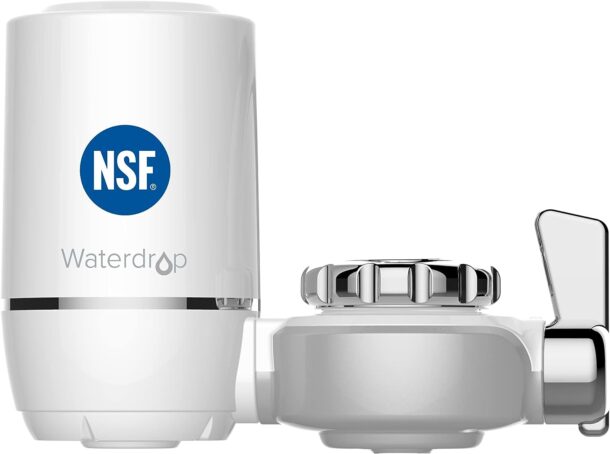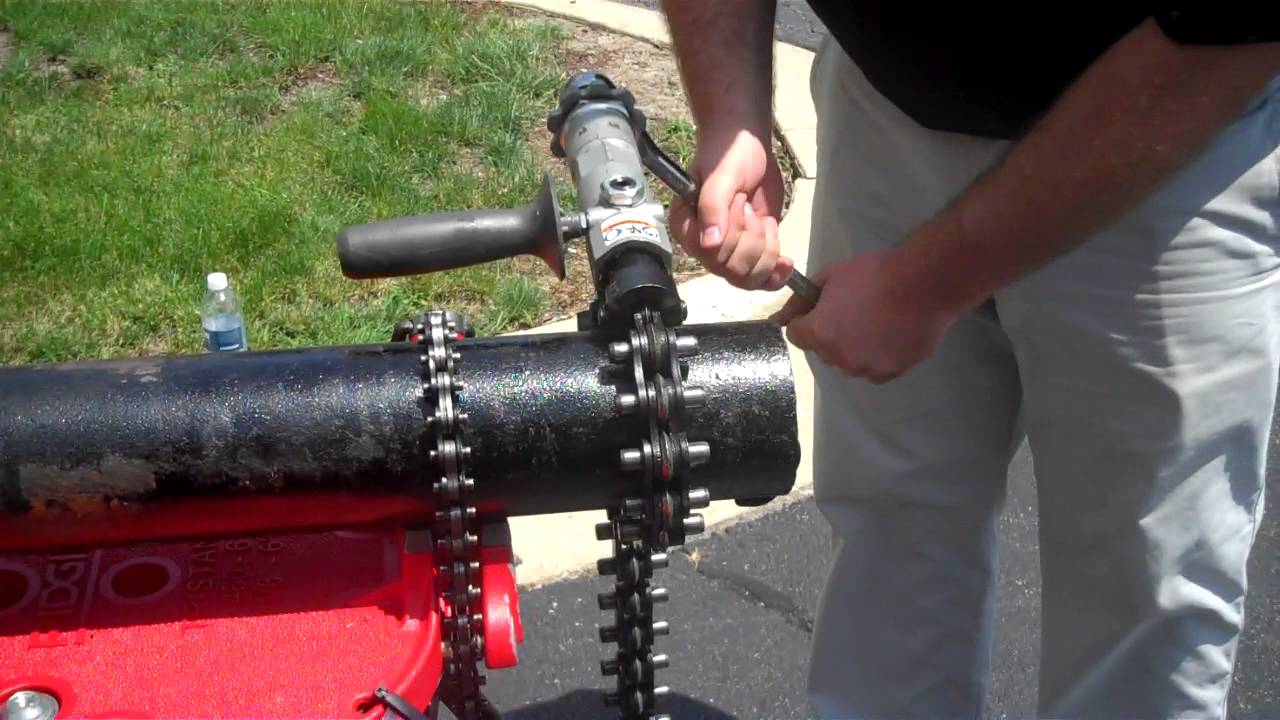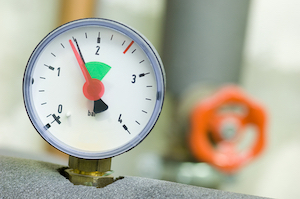In the pursuit of clean and safe drinking water, consumers are faced with a multitude of options, each promising to deliver pure and refreshing hydration. Among these choices, faucet-mounted water filters stand out as a convenient and effective solution. In this article, we’ll explore the benefits of using a faucet mounted water filter over other Read more
Whats New

In the pursuit of clean and safe drinking water, consumers are faced with a multitude of options, each promising to deliver pure and refreshing hydration. Among these choices, faucet-mounted water filters stand out as a convenient and effective solution. In this article, we’ll explore the benefits of using a faucet mounted water filter over other kinds of water filters.

Convenience and Ease of Installation
One of the most notable advantages of faucet-mounted water filters is their effortless installation process. Unlike under-sink or countertop models that may require complex plumbing adjustments or professional assistance, faucet-mounted filters can be easily attached to the existing faucet with minimal tools and effort. This feature makes them a preferred option for those who seek convenience and simplicity in their water filtration solutions. Within minutes, you can transform your tap water into a cleaner, better-tasting beverage.
Space Efficiency
In today’s fast-paced world, space is often at a premium. Faucet-mounted water filters excel in this regard as they occupy very little space compared to bulkier alternatives like pitcher filters or whole-house systems. Their compact design allows them to blend seamlessly with your kitchen décor without monopolizing valuable countertop or refrigerator space. This space-efficient nature makes them particularly appealing to those living in apartments or smaller homes where every inch counts.
Instant Filtration and On-Demand Clean Water
Faucet-mounted filters offer the advantage of providing clean, filtered water on-demand. Unlike pitchers that require filling and waiting for the water to filter through, or under-sink models that may involve a delay in receiving filtered water, faucet-mounted filters deliver instant gratification. This is especially convenient for busy households or when you’re in a hurry to quench your thirst.
Cost-Effective Solution
When compared to the upfront costs and maintenance expenses associated with other types of water filtration systems, faucet-mounted filters are a cost-effective option. Their initial purchase price is typically lower, and they require minimal maintenance. Replacement filters are usually affordable and easy to find, ensuring that your ongoing expenses stay manageable.
Retention of Essential Minerals
One concern with certain types of water filters is the removal of essential minerals along with contaminants. Faucet-mounted filters strike a balance by retaining beneficial minerals like calcium and magnesium while effectively removing impurities. This ensures that your water not only tastes better but also maintains its nutritional value.
Customizable Filtration
Different areas have varying water quality issues. Faucet-mounted filters are designed to cater to specific needs by offering a range of filter options. Whether you’re dealing with chlorine taste and odor, heavy metals, or microbial contaminants, there’s a filter cartridge that can address your concerns. This level of customization ensures that you’re getting the most appropriate filtration for your unique water quality.
No Permanent Alterations to Plumbing
Unlike under-sink or whole-house filtration systems that might require permanent alterations to your plumbing, faucet-mounted filters leave your plumbing infrastructure untouched. This is especially beneficial for renters who may not have the freedom to make permanent changes to their living spaces. Faucet-mounted filters provide a high level of filtration without any significant modifications.
Conclusion
The benefits of using a faucet-mounted water filter are numerous and appealing. They offer unmatched convenience, space efficiency, instant filtration, cost-effectiveness, and more. If you’re looking for a hassle-free way to enjoy clean and healthy drinking water, a faucet-mounted water filter could be the perfect choice for you.

Business is all about consistency, longevity, and getting the right results. I’m order to achieve these three things, your company must have everything running in fine order. You’ll do this by adopting the best strategies and recruiting the right people. Failure to do this kind of thing will result in much worse outcomes. Anyone looking Read more
Business is all about consistency, longevity, and getting the right results. I’m order to achieve these three things, your company must have everything running in fine order. You’ll do this by adopting the best strategies and recruiting the right people. Failure to do this kind of thing will result in much worse outcomes. Anyone looking to create a more competitive business will know the standards that should be set.
In among all of this, there needs to be a level of safety and steadiness. Without a steady ship, your business might fall to pieces in a matter of weeks. You never know what might go wrong in business, so you must prepare for all sort of eventualities. Serious danger can strike when you least expect it. Here are a few ways you can prevent or stop problems like these from happening:

Identify Hazards With Comprehensive Risk Assessment
Understanding what can happen in any given eventuality will help with preventing issues. A thorough risk assessment is something that any serious business needs to take care of. You’ll be able to identify potential hazards and deal with them accordingly. Faulty equipment and sleepy surfaces are just two examples of what can be taken care of. A regular review will help to update the situation and progress as new risks inevitably emerge. Taking part in something like this is proactive – which is a huge step up from reactive competitors.
Train Employees Robustly
Comprehensive training programs will turn your employees into much more competent individuals. They won’t exactly be useless when it comes to certain issues, but training will only be beneficial in the long run. Emergency procedures and equipment usage should be talked about regularly. There will be changes and things will evolve all of the time, so regular training is paramount.
Possess The Right Emergency Plans For Any Situation
Over the course of your tenure in business, there will be emergency issues from time to time. It’s unheard of that’s a business will be around for years without dealing with something like this. Let your employees know about evacuation routes and assembly points. include protocols for medical emergency and fires.
Maintain And Inspect The Premises Efficiently
Maintenance schedules should be implemented for all equipment and machinery. These inspections will ensure that detections are found earlier. Potential malfunctions in deterioration are very common in many workplaces. For instance, incorporating devices such as aquatrol safety valves in the industrial world makes plenty of sense as they will be able to prevent pressure related accidents from happening.
Communicate Effectively With Everybody In The Workplace
A culture of safety will mean that sensible behavior is a given. If every employee is comfortable with reporting near misses and concerns, you will be in a much safer environment each day. Anonymous reporting mechanisms are agree addition, too. When everybody works together, the entire workplace becomes a much better place to spend time. A collaborative environment, with everybody actively participating in identifying risks, can ensure success happens sooner rather than later.

Cutting pipes may seem like a simple task, but it can easily be done incorrectly, which can cause all kinds of issues. Below are just a few questions to consider before you cut a pipe. What pipe cutting tools can I use? There are various different tools that you can use to cut a pipe Read more
Cutting pipes may seem like a simple task, but it can easily be done incorrectly, which can cause all kinds of issues. Below are just a few questions to consider before you cut a pipe.

What pipe cutting tools can I use?
There are various different tools that you can use to cut a pipe. These include:
- A pipe cutter: This is the tool that most professional plumbers use. It’s purpose-built for cutting pipes and provides a clean and accurate cut.
- An angle grinder: An angle grinder can also get the job done. The cut is rougher though so you’ll need to make sure that you deburr the cut area afterwards.
- A handsaw: If you’re a DIYer and you don’t want to spend money on fancy tools, you can always use a handsaw to saw through a pipe. Just be wary that it will take longer (something to consider if you’re cutting lots of piping) and it could be harder to get a clean straight cut (you’ll need to file and sand down the cut area after).
- Other tools: Electric saws can also be used to cut certain piping. They will do a quicker job, but could leave a rough cut. When it comes to manufacturing piping, more fancy tools can be used to get a clean cut such as a plasma cutter. You can find CNC plasma cutter parts online for times when you need to carry out repairs.
All in all, the right tool depends on the material you’re cutting and the size of the pipe.
What material is the pipe?
Pipes are usually made from metal or plastic. Metal pipes are usually made from copper or steel, while the most common plastic used in piping is PVC.
Metal piping is harder to cut than plastic piping. You will usually need a pipe cutting tool in order to get a clean cut. When using a saw, make sure to use a blade designed for metal. Angle grinders can also be used.
Plastic piping is often designed so that it can be easily removed by unscrewing and replacing sections rather than having to cut it. That said, if you do need to trim down a plastic pipe, you can always use a plastic pipe cutting tool. Plastic pipe cutting saws also exist on the market, however if you’re cutting a single pipe, you’ll usually be able to get away with a regular woodworking saw (be it a handsaw or an electric saw).
How big is the pipe?
Pipes that are very wide or very thick won’t be able to be cut with a pipe cutter. In these cases, you may have to use something a bit more heavy duty like an angle grinder or portable electric saw.
Make sure to wear protective gear when using an angle grinder. This guide offers some angle grinder safety tips.
The importance of a clean cut
The most important part of cutting a pipe is getting a clean cut. Obviously, if the cut is severely wonky or jagged, you’ll have difficulty attaching it to other pipes. However, even a slightly rough edge can be enough to cause a leak. This is why pipe cutters are usually the best option.

Boiler pressure gauges are critical in maintaining safe and efficient residential and commercial heating systems operations. These gauges are designed to measure the pressure inside the boiler, providing valuable data that helps operators monitor and control the boiler’s performance. This article explores the significance of pressure gauges, their types, installation, calibration, and maintenance to ensure Read more

An illustration of a hot water boiler pressure gauge
Boiler pressure gauges are critical in maintaining safe and efficient residential and commercial heating systems operations. These gauges are designed to measure the pressure inside the boiler, providing valuable data that helps operators monitor and control the boiler’s performance. This article explores the significance of pressure gauges, their types, installation, calibration, and maintenance to ensure optimal and reliable functioning of boiler systems.
Importance of boiler pressure gauges
Boiler pressure gauges are indispensable components that enable operators to keep track of the pressure levels within the boiler. Maintaining the correct pressure is crucial for several reasons:
- Low-pressure indicator: One of the primary functions of the boiler pressure gauge is to indicate when the pressure in the system is too low. Low pressure often occurs due to insufficient water levels, resulting from excessive bleeding from radiators, leakages, or incomplete water filling during installation.
- High-pressure indicator: The boiler gauge also alerts users when the system pressure is too high. Radiators can be carefully bled to reduce pressure in space heating applications while monitoring the pressure gauge when the boiler is operational. In other applications, a pressure relief valve can regulate the boiler’s high pressure.
- Maintenance indication: Inconsistent pressure readings during boiler operation may indicate the need for maintenance. These irregularities could be caused by leaks, pipe blockages, or faults in the burner or electrical heating coils. When such inconsistencies are observed, it is important to conduct proper boiler maintenance to address and rectify any underlying issues.
Types of boiler pressure gauges
There are two primary types of pressure gauges used in residential and commercial boilers:
- Bourdon tube gauges: Bourdon tube gauges are the most common type in boiler applications. They consist of a coiled tube connected to the boiler system. As pressure increases, the tube straightens, and the movement is converted into a reading on the gauge. These gauges are reliable, accurate, and suitable for various pressures.
- Digital gauges: With technological advances, digital pressure gauges have become popular due to their ability to provide precise and easy-to-read pressure values. They often come with additional features like alarms and data logging, making them useful for advanced monitoring and control systems.
Selection criteria
Consider the following factors when selecting a boiler pressure gauge:
- Connection size and type: Pressure gauges come with different connections, such as BSP, NPT, and DIN.
- Connection material: Boiler pressure gauges can be made from various materials, like copper alloy and brass. It’s crucial to choose a material that is compatible with the holding socket and process. Always check the material compatibility chart before making a decision.
- Connection location: The gauge’s connection point can be located above, below, or at the rear portion of the gauge. Consider the available space in the system to make an informed decision.
- Unit of measurement: Boiler pressure gauges commonly provide readings in both bar and psi for gauge pressure measurement.
- IP protection: Considering the IP rating is important, especially if the gauge will be exposed to dust or water splashes in its environment. Higher IP ratings will increase the cost of the gauge.
- Digital reading: There are options for digital display pressure gauges, some of which can transmit readings to a remote controller. Most boiler pressure gauges have a dial indicator.
Installation of boiler pressure gauges
Proper installation is vital for the accurate functioning of pressure gauges. Key considerations include:
- Location: Install the pressure gauge on the boiler or on a nearby panel where it is easily visible to operators.
- Piping: Quality piping and fittings ensure a secure connection between the gauge and the boiler system.
- Isolation valves: Incorporate isolation valves on both sides of the pressure gauge to facilitate easy removal and maintenance without affecting the boiler’s operation.
- Calibration: Calibrate the gauge according to the boiler’s pressure range and system requirements.
Calibration and maintenance
Regular calibration and maintenance are essential to keep pressure gauges accurate and reliable:
- Calibration: Perform periodic calibration to verify the gauge’s accuracy against a standard reference. This ensures precise readings and adherence to safety standards.
- Inspection: Regularly inspect the gauge for signs of damage, wear, or leaks. Replace damaged gauges immediately to prevent inaccuracies and ensure safety.
- Cleaning: Keep the gauge lens clean and free from debris to maintain clear visibility. Replacement: Replace pressure gauges that consistently fail calibration tests or exhibit signs of malfunction.
Conclusion
Boiler pressure gauges are vital instruments that enable operators to monitor and regulate boiler pressure, ensuring safety, energy efficiency, and optimal performance. Choosing the right gauge type, proper installation, calibration, and regular maintenance are all crucial steps in maximizing the longevity and effectiveness of pressure gauges in residential and commercial boiler systems. By following these guidelines, operators can ensure safe and efficient heating operations while extending the life of their boiler systems.

Do you have big plans for your plumbing business? Are you ready to take your company to the next level? If so, you may have been considering expanding your company. Growing your plumbing business is the ideal way to take it to the next level of success, and now is a great time to do Read more
Do you have big plans for your plumbing business? Are you ready to take your company to the next level? If so, you may have been considering expanding your company. Growing your plumbing business is the ideal way to take it to the next level of success, and now is a great time to do it. Right now, the demand for plumbers is high. According to a recent HBI Construction Labor Market Report, there is a 55% shortage of plumbers that are available to work.
The shortage of plumbers provides you with the ideal opportunity to capitalize on this increased demand for your services. But, even when demand is high for your services, choosing to expand your business is still a big decision to make.
Taking steps to grow your business is always something that should be done carefully. Diving straight into scaling your business and investing significant amounts of money and resources to facilitate the expansion can be a costly error to make.
Putting too much of your time, money, and effort into growing your company can jeopardize your entire business and put everything you have worked so hard for at risk. To protect your business and to reduce the risks associated with expansion, it is crucial to take a measured approach. Read on to discover essential tips to help you successfully expand your plumbing business and help your company to reach its full potential.

Carry Out Extensive Research
Finding ways to reduce the risk of expanding your business is always crucial. Doing all that you can to protect your company as it is right now is essential. Otherwise, you risk sacrificing everything that you have worked for up to this point.
One of the best ways to reduce the risks involved in expanding your business is to carry out extensive research. Treating your expansion plans in the same way that you would a new business can be helpful. This means carrying out lots of research to familiarize yourself with competing businesses and the services that they offer. This will give you a far clearer idea of the types of services your business should offer if you want to compete directly.
Make a Plan
Taking a look through all the research that you have gathered together should mean that you now have a huge body of information that you can use to inform your expansion decisions. All of this research information may seem a little overwhelming to start with, but it is worth taking your time to work through it all, as it is the perfect way to understand who your competitors will be and how you can rival them successfully.
Working your way through all your research to build your knowledge is also the ideal way to identify any gaps in the market that your newly-expanded business will be able to fill. Based on all this information, you will be able to write a thorough business plan that details your expansion plans. Your business plan will provide to be vital in the weeks and months ahead, as you can keep referring back to it to ensure your progress stays on track.
Explore Opportunities
When you decide to expand your business, a whole host of opportunities will open up to you. You will be able to reach a whole new section of clients and even have the capability to offer specialist services based on your team’s expertise. Once you start to look for new opportunities, you will soon find that there are lots of options to explore in your quest to grow your business.
When you are just starting out on your journey into expansion, it is essential to keep your cash flow in mind at all times. Keeping your cash flow healthy is vital when expanding your business. Many companies make the mistake of stretching their finances too far during their growth phase, which means that they put their businesses under unsustainable levels of pressure. To overcome this, you may want to seek out contracts that offer your company repeat business to help your business to expand successfully while also maintaining a healthy cash flow. Pitching your business in the commercial sector is the best way to do this. Securing a contract to take care of all of a business’s plumbing needs and ongoing maintenance is an excellent way to receive a steady income for your business. As your team and your reputation continue to grow, you should find you attract more ongoing clients.
Invest in Software
While your business may have been successfully operating for a while now, it is essential to remember that the way you run it will need to change as it grows. More employees and an increase in jobs mean that it will be much harder to keep track of what is happening in your business on a daily basis. However, as your business grows, it becomes more important than ever before for it to stay organized and for you to keep track of what is happening both on a day-to-day level and at an operational level.
When you have employees going off to jobs in many different locations throughout the day, it can be an ongoing challenge to try and keep track of where they are and what job they are currently working on. But knowing this information is vital if you are to offer your customers the very best service and to keep your business running efficiently.
Investing in the best field service management software will make running your business so much easier. You will be able to organize your team’s workload more efficiently while also ensuring that your customers get a far better service. Choosing software that offers live field updates will help you to monitor where your team members are at any one time. This is vital when you run a plumbing business and will help you to provide an emergency plumbing service to your customers and to get your team to them in the fastest possible time.
